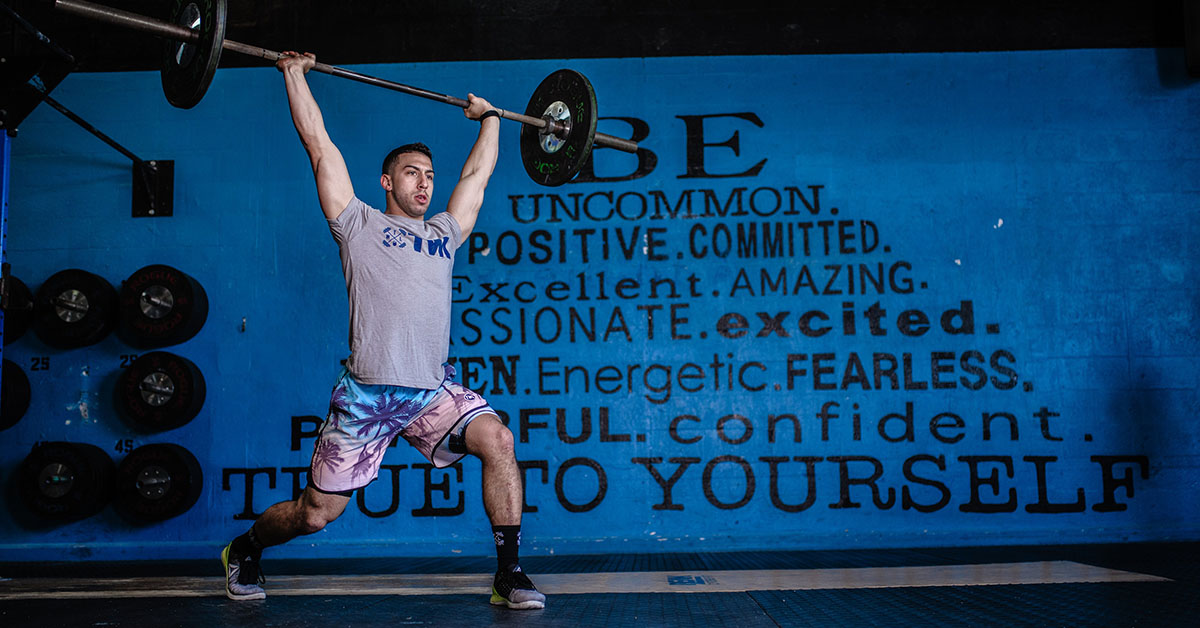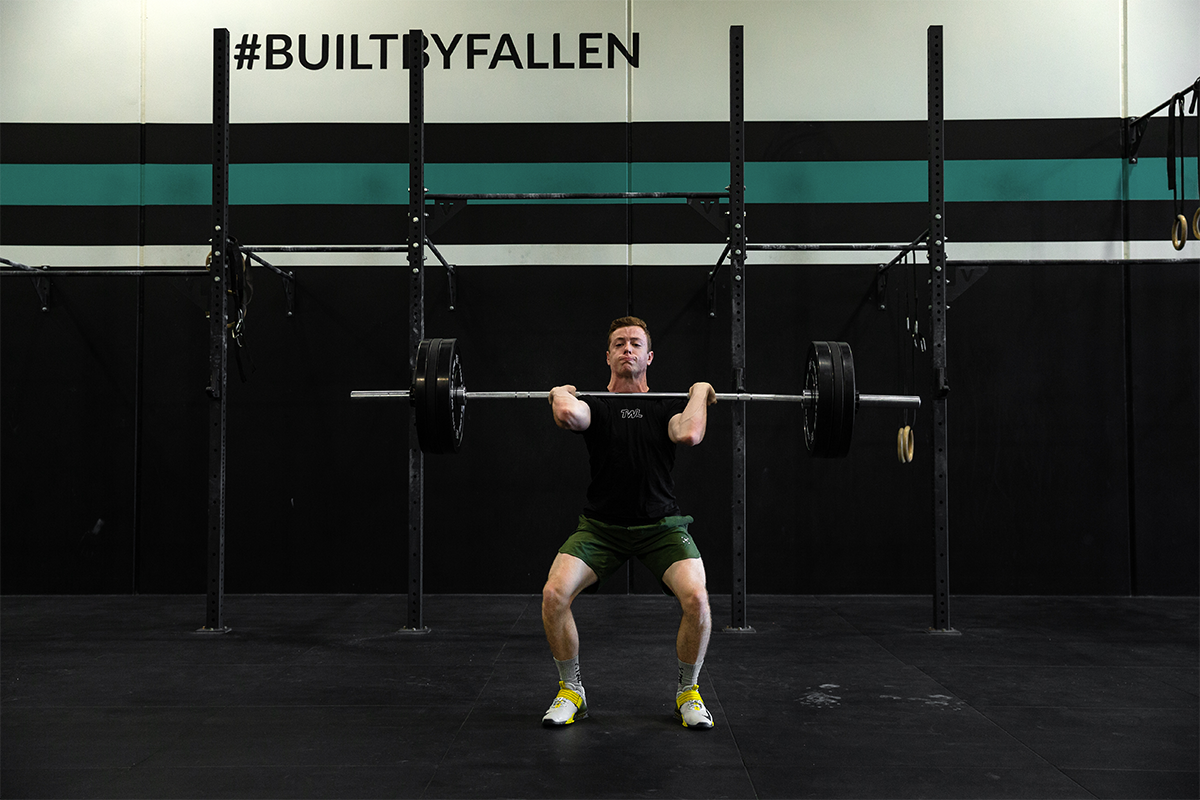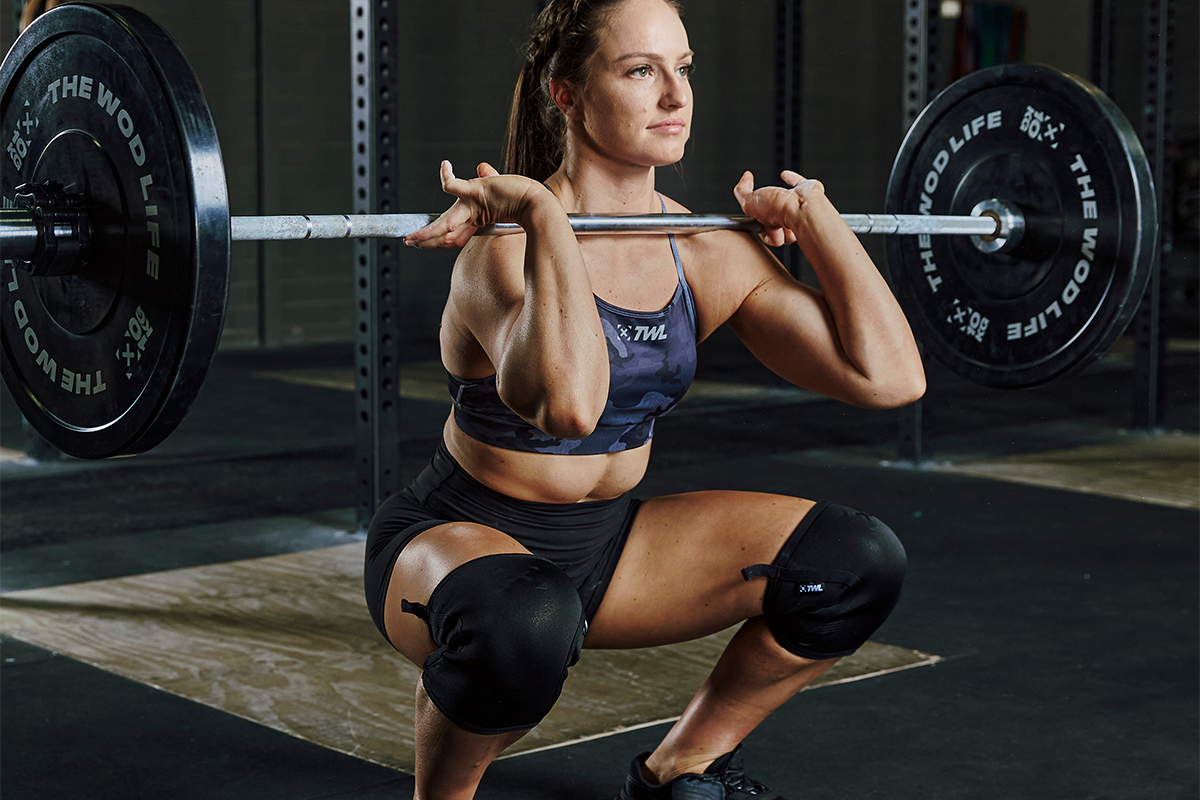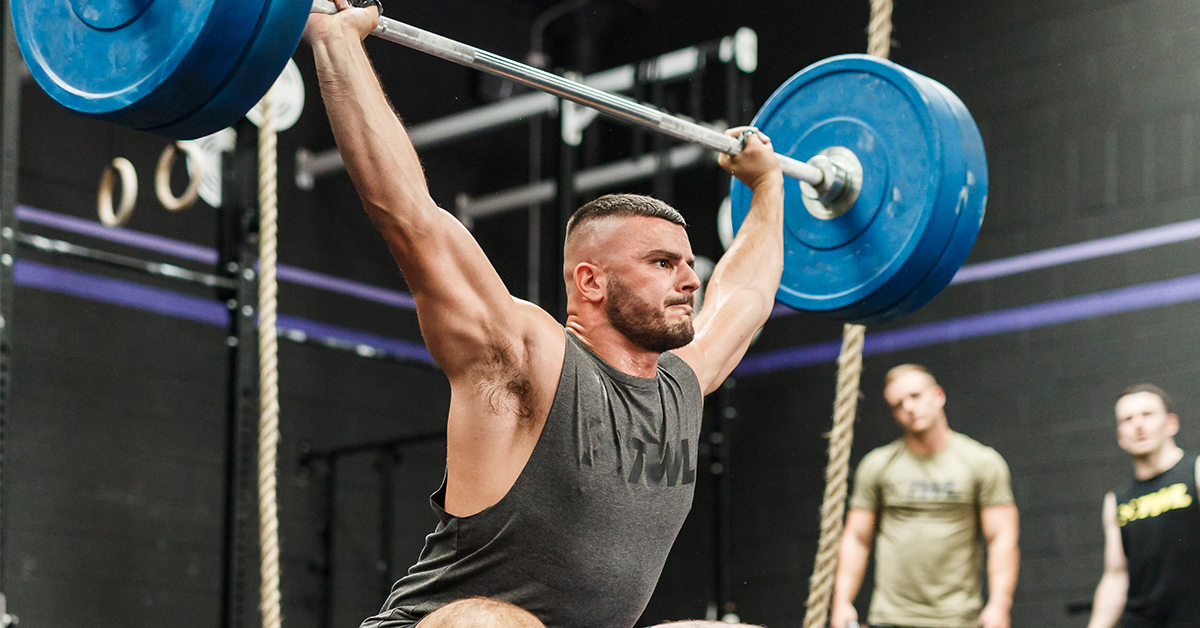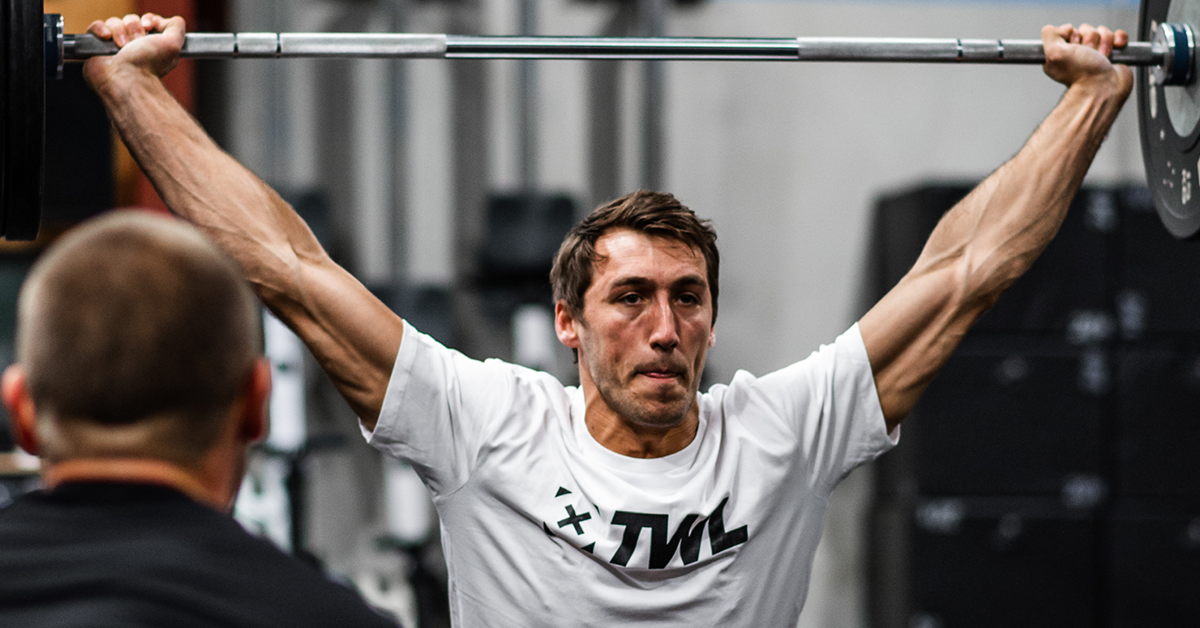Deceivingly technical, the split jerk is often a sticking point for those looking to increase their clean and jerk numbers. Most cross-training athletes master the clean with both strength and technique but find the jerk holds them back.
The split jerk requires more practice than the clean because it’s more complicated. The dip and split are precise movements with little room for error at maximum weights. Your jerk may not be improving in cases when there are:
- Technical errors — footwork or the dip position
- A lack of strength — core strength and glute strength
- Over- or under-training
Let’s talk about each of these.
Technical Errors
A Faulty Dip
Dipping incorrectly is a common mistake. Dipping too quickly can cause the athlete to lose control of the barbell. You know you are dipping too quickly if the bar leaves your shoulders through the dip and then lands back on the shoulders during the drive upward.
A dip that’s too slow will commonly cause too much fatigue, as you spend more time than necessary under tension. You need to conserve enough energy to explode out of the bottom and start sending the bar upward overhead.
Notice where your weight is in your feet. When you dip, your weight should be centered in the mid-foot, and an athlete should dip no more than 10% of their own height.
Footwork
Are your feet landing in the most advantageous split position? A strong and stable catch position requires clean and precise footwork.
When your feet are split, the load should be evenly distributed between the right and left foot, both forward and back and side to side. Read: this is not a lunge! Both feet are turned slightly toward the midline (inward), for added stability. If you notice you’re having trouble with your feet rocking inward and/or outward, a more stable shoe will likely benefit you. Consider a more appropriate Olympic weightlifting shoe that offers extra support.
Your front foot and back foot should travel the same distance while staying a shoulder-width apart. The shoulders and hips maintain the same position throughout the entire movement.
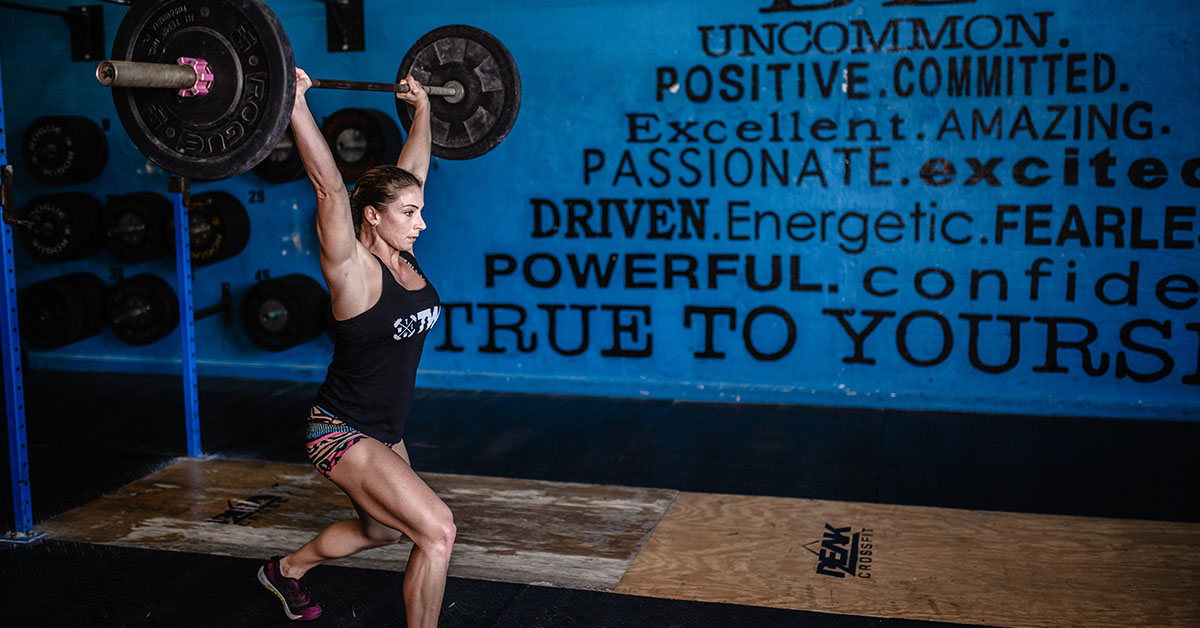
The takeaway? Your weight should not be mostly forward or mostly back. It should be down the centerline of your body.
Diving Too Far
A beginner error with the jerk is to try to dive down under the bar, which softens the catch position of the jerk. If you find yourself trying to split wider and deeper, you might be putting your jerk in jeopardy. As long as you have a stable and strong split, the depth of the split should not be forced. As your weights climb, you will likely need to get lower under the bar, but don’t intentionally do this.
Your dip should be slow and controlled, followed by a lightening-speed jump and split, rather than diving under the bar with soft knees.
A Lack of Strength
As with any overhead movement, the jerk requires a core that is stable and strong. In both the overhead position and front rack position, the weight of a barbell is supported by core muscles around the lumbar. If the core is unable to keep the trunk completely vertical and the elbows high, the athlete will encounter problems with the lift as the weight of the bar shifts off the center of gravity.
The other element of strength required is glute and hip strength. Many athletes may have unilateral weakness, which becomes most evident in their jerk performance. The glutes, quads, and hamstrings should be particularly strong to stabilize the hips in the split position. If you tend to favor one side of your body, the split jerk will bring this out.
Lastly, many athletes experience trouble with wrist strength, making it necessary to spend time training even those tiny (but important) muscles. Wrist wraps are also a good idea, as a supplement for your own strengthening exercises.
Over- or Under-Training
Over-training a lift is just as harmful as not spending enough time on it. Over-training the jerk may be reenforcing fatigue-related errors. It also may not allow enough time for the central nervous system to adapt and adjust to the training. Training at loads that are too heavy and trying to fit too much into a session can be harmful.
Since the jerk is so technical, it requires more reps in any given week than the clean. Spending time working the jerk at around 80%-85%RM at a frequency of three to four times per week is ideal. Sets and reps might look something like:
- 40% x 2
- 50% x 2
- 60% x 2 x 2
- 70% x 2
- 80% x 1 x 3
- 83% x 1 x 4
Optimal training volume lies between 12 to 17 repetitions per session. Training on jerk boxes is also the best method to prevent unnecessary shoulder fatigue. Avoid heavy shoulder training before jerking as it slows the movement and destabilizes the shoulders.
Remember to enjoy training and that consistency is key to success with technical lifts!

